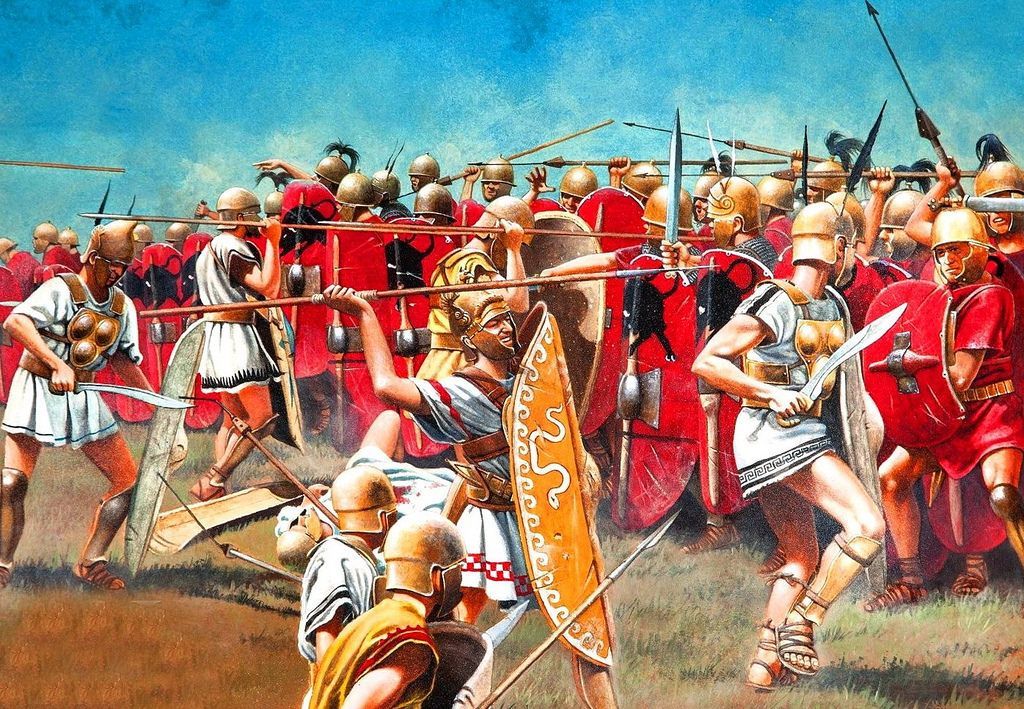Социйские сказания
Nov. 1st, 2018 02:28 pmRoman military equipment in the 4th Century BC: pilum, scutum and the introduction of manipular tactics by Juliusz Tomczak.
Хороший сказ о том, откуда римская слава пошла и как формировался характерный для армий Республики "манипулярный" боевой порядок. Mind-blasting открытий в статье нет, скорее хорошая компиляция современного взгляда на проблему, с увязыванием источниковедения, артефактов искусства и копанины.

Из выводов:
"During the wars with mountain tribes of Central Italy, who often used javelins, the popularity of oblong shield was growing, and, by the turn of the 5th and 4th centuries BC, it completely replaced the hoplite shield. At the same time, the popularity of heavy javelin with a long haft increased and it gradually replaced the throwing spear. In order to optimize the use of missile weapons and under the influence of the experience of fighting against the mountain tribes and – perhaps as the main stimulus – against the Celts, the Romans replaced the phalanx with the manipular formation. Instead of property, the main criterion be - came the age, possibly because younger men were better suited for the new way of fighting, which demanded greater mobility. An equivalent of former hoplites, the triarii, who were now the oldest and most experienced of the soldiers, stood in the rear of battle formation, where they were probably supported by accensi. In the forefront were the light armed and two echelons of heavy infantry (hastati and principes) armed with throwing spears and, increasingly, with heavy javelins. They could regroup and support each other, inflict casualties on the enemy and weaken his will to fight with a hail of javelins, and, in favorable circumstances, charged with drawn swords. If they failed or didn’t attack, a decisive charge would have been performed by the better prepared to fight in close quarters: the spear-armed triarii . The new tactics allowed for optimal use of javelins, as well as regrouping and bringing in fresh troops to the fight. The nature of battles became more fluid and they lasted longer. Those changes probably took place around the years 390–360 BC. The manipular formation was further improved and sim - plified during the Samnite Wars, late in the 4th century BC. At that point tactics and weaponry did not differ substantially from those in use a century later. During the 3rd and early 2nd centuries BC, the two last elements of armament appeared, known from Polybios’ account – the chainmail armour, which replaced the bronze muscle cuirass for wealthier soldiers, the heavy pilum with haft with a square plate, and a sword “called Spanish”."
( перевод )
Кстати, уважаемые, никто не в курсе, находятся ли еще кретины, отрицающие теорию "тяжелых метателей" Жмодикова?
Хороший сказ о том, откуда римская слава пошла и как формировался характерный для армий Республики "манипулярный" боевой порядок. Mind-blasting открытий в статье нет, скорее хорошая компиляция современного взгляда на проблему, с увязыванием источниковедения, артефактов искусства и копанины.

Из выводов:
"During the wars with mountain tribes of Central Italy, who often used javelins, the popularity of oblong shield was growing, and, by the turn of the 5th and 4th centuries BC, it completely replaced the hoplite shield. At the same time, the popularity of heavy javelin with a long haft increased and it gradually replaced the throwing spear. In order to optimize the use of missile weapons and under the influence of the experience of fighting against the mountain tribes and – perhaps as the main stimulus – against the Celts, the Romans replaced the phalanx with the manipular formation. Instead of property, the main criterion be - came the age, possibly because younger men were better suited for the new way of fighting, which demanded greater mobility. An equivalent of former hoplites, the triarii, who were now the oldest and most experienced of the soldiers, stood in the rear of battle formation, where they were probably supported by accensi. In the forefront were the light armed and two echelons of heavy infantry (hastati and principes) armed with throwing spears and, increasingly, with heavy javelins. They could regroup and support each other, inflict casualties on the enemy and weaken his will to fight with a hail of javelins, and, in favorable circumstances, charged with drawn swords. If they failed or didn’t attack, a decisive charge would have been performed by the better prepared to fight in close quarters: the spear-armed triarii . The new tactics allowed for optimal use of javelins, as well as regrouping and bringing in fresh troops to the fight. The nature of battles became more fluid and they lasted longer. Those changes probably took place around the years 390–360 BC. The manipular formation was further improved and sim - plified during the Samnite Wars, late in the 4th century BC. At that point tactics and weaponry did not differ substantially from those in use a century later. During the 3rd and early 2nd centuries BC, the two last elements of armament appeared, known from Polybios’ account – the chainmail armour, which replaced the bronze muscle cuirass for wealthier soldiers, the heavy pilum with haft with a square plate, and a sword “called Spanish”."
( перевод )
Кстати, уважаемые, никто не в курсе, находятся ли еще кретины, отрицающие теорию "тяжелых метателей" Жмодикова?